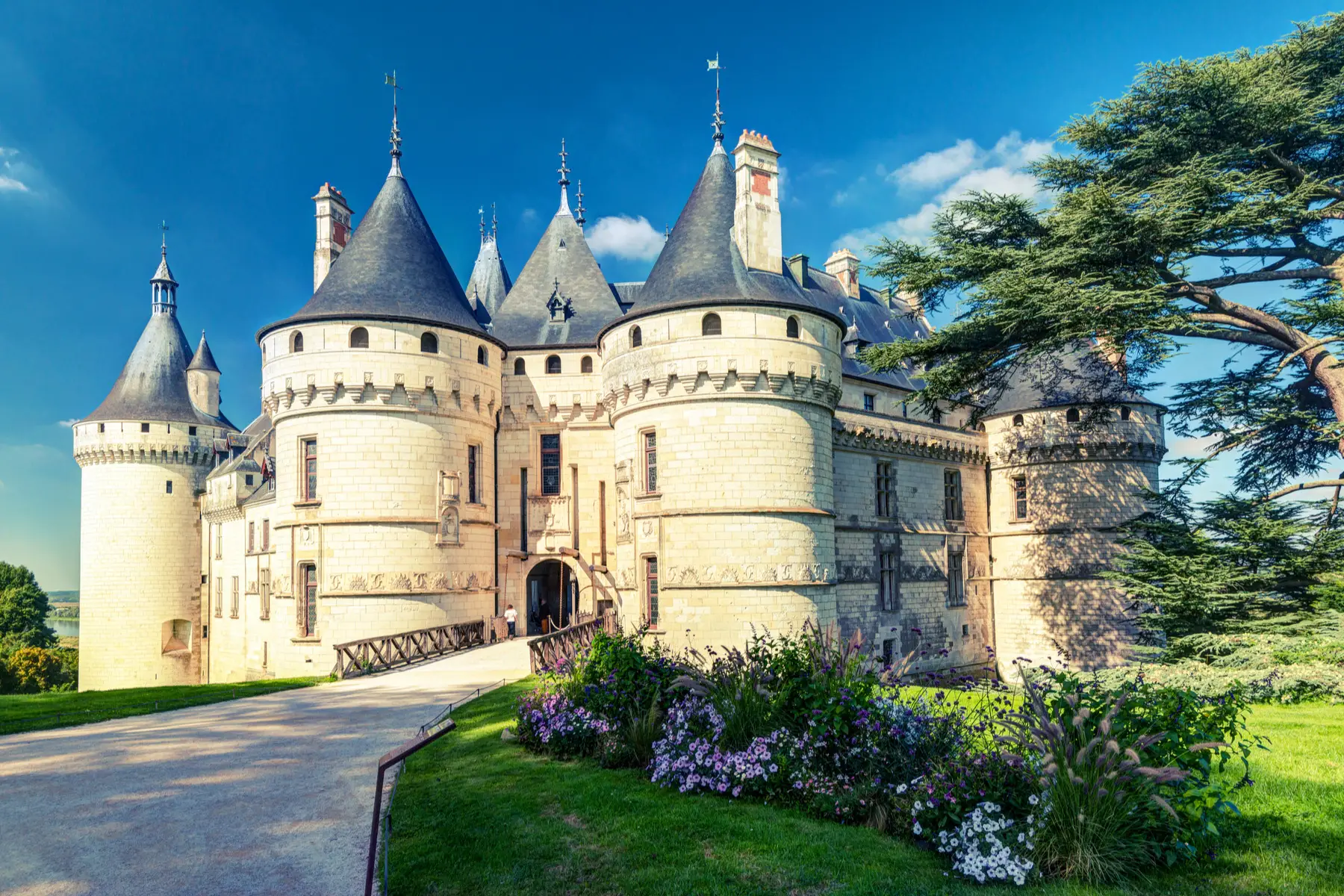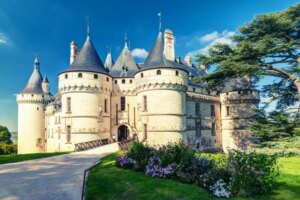There’s a reason why France is the most visited country on the planet. Not only does it boast some of the most exquisite wines and cuisine in the world, but also some of the most beautiful destinations.
Indeed, wherever you travel within l’Hexagone, there are countless scenes that will take your breath away. From rolling vineyards and plunging canyons to towering sand dunes and majestic villages, there is more than enough to satisfy curious travelers.
When planning to explore these breathtaking destinations across France, managing your finances efficiently becomes just as important as planning your itinerary. Services like Wise make it easy to exchange your currency at the mid-market exchange rate and spend in euros.
- Champagne: home of Dom Pérignon
- Provence: land of lavender
- Gorges du Verdon: the Grand Canyon of France
- Mont Saint-Michel: the real Rapunzel’s Tower
- Dune du Pilat: Europe’s tallest sand dune
- Saint-Tropez: land of luxury
- Rocamadour: the sacred hilltop pilgrimage
- The Loire Valley: the Garden of France
- Auvergne: the land that time forgot
- Corsica: the island of beauty
- Managing your money in France
- FAQ – Frequently asked questions
Allyz
Plan and protect your next trip with Allyz. This digital travel platform offers a range of products to assist travelers before, during, and after their journey. The platform includes information and advice, a trip planner, and travel insurance. They also provide real-time updates so you can plan for every eventuality. Travel securely with Allyz.
Champagne: home of Dom Pérignon
Let’s face it, a roundup of the best places to visit in France wouldn’t be complete without mentioning the birthplace of bubbly.
Located in the northeast of France, just a 1.5 hour’s drive from Paris, the Champagne region is an absolute must-visit for anyone who loves to sip on bubbles.
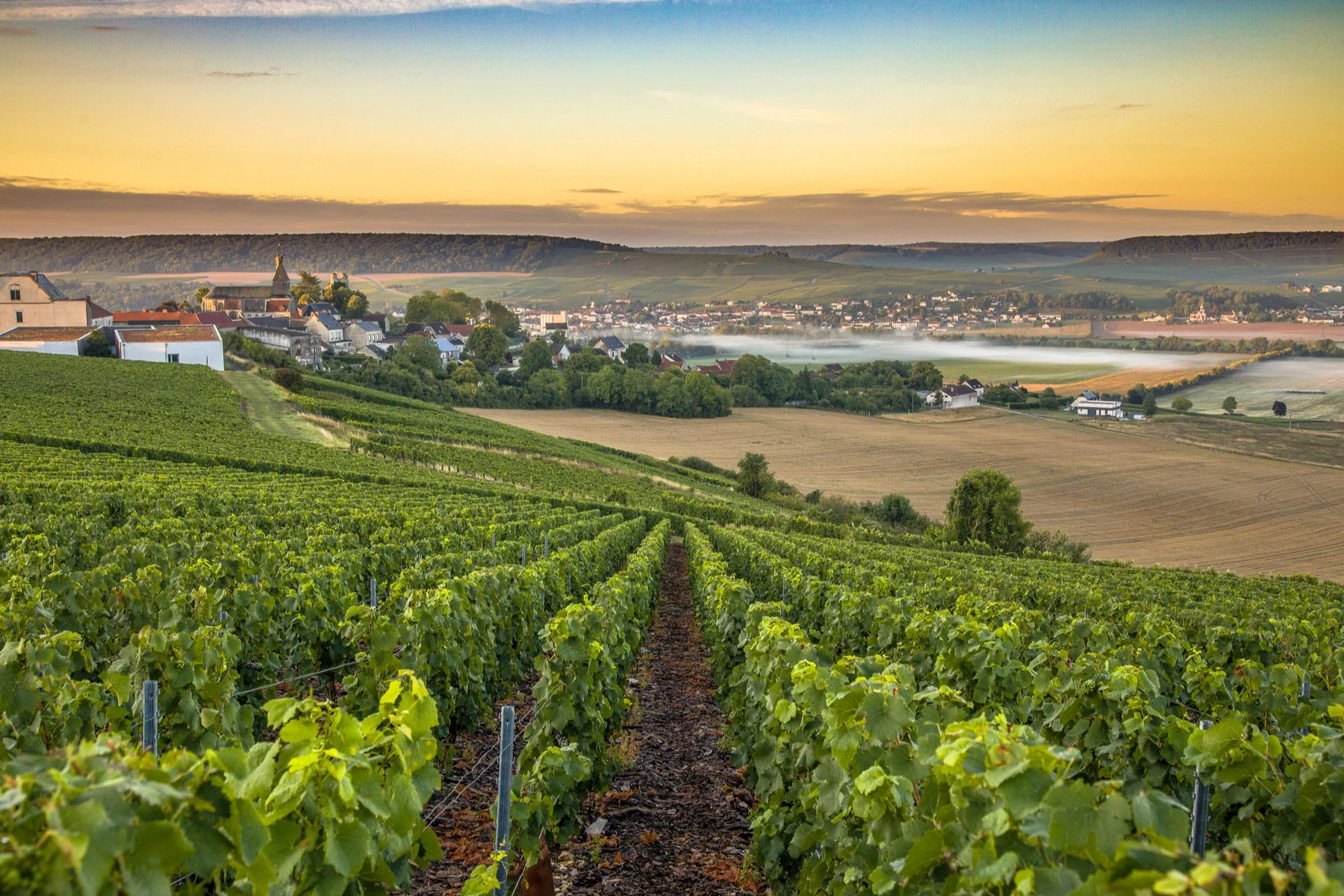
Just watching the sun set over the idyllic rolling vineyards and dreamy landscape is reason enough to visit the region.
That said, those who do wish to sample the fruits of the land can embark on a tour of one of the prestigious Champagne houses. And this is sure to make for an unforgettable experience – or perhaps not if they choose to overindulge!
Moët & Chandon, Veuve Cliquot, Taittinger, and Dom Pérignon, are among the famous houses that open their gates to the public. The latter is perhaps best known for its namesake; a Benedictine monk who was an important quality pioneer for Champagne wine.
Contrary to popular belief, however, Dom Pérignon did not invent the famous wine itself. This is just one of many facts you will learn while visiting his cellar and final resting place in the Abbey of Hautvillers.
Provence: land of lavender
Every summer, the seemingly endless ocean of lavender fields makes Provence one of the most beautiful – not to mention, fragrant – places to visit in France.
The heavenly-scented crop can be found almost everywhere in the region during this time. That said, some of the most scenic spots to enjoy it include the Valensole Plateau, the Sault Plateau, and the Luberon Valley.

For the ultimate postcard shot, though, nothing beats the flower fields surrounding the Notre-Dame de Sénanque Abbey.
Nestled in the tranquil countryside near the village of Gordes, the stunning 12th-century church is shrouded in a sea of purple every June and July.
Along with the local honeybees, these beautiful lavender fields are lovingly tended by the monks who live in the abbey. In fact, visitors can even stay with them and enjoy a serene spiritual retreat.
If you prefer to keep it to a day trip, however, the fields are open from 09:30 during the summertime; and 13:00 on Sundays.
Just bear in mind that the unique beauty of the location means that it becomes extremely busy during this time. Therefore, make sure you arrive early and join the first tour of the day at 10:30.
Wise account
Are you an expat or thinking of moving to France? Managing your money across borders shouldn’t be complicated. With a Wise account, you can hold over 40 currencies and pay with a Wise debit card in more than 150 countries. Whether you need to spend abroad, receive or send money home, Wise can help make international money management simpler.
Gorges du Verdon: the Grand Canyon of France
If a trip to the Grand Canyon in Arizona feels like too much of a stretch, then you could always settle for its French counterpart.
Nestled in the Provence-Alpes-Côte d’Azur region of southeastern France, the 700-meter-deep Gorges du Verdon is a truly breathtaking sight to behold.

Carved by the Verdon River, the plunging limestone canyon is the largest in Europe. It is also a hotspot for adrenaline-fueled activities and watersports.
Cruising along the 25-kilometer-long stretch of mesmerizing turquoise waters that flow into the artificial Lac de Sainte-Croix is a truly unforgettable experience. More adventurous travelers, however, might prefer to brave white-water rafting along the rapids.
A more relaxing day can be spent hiking around the 100-kilometer rim of the canyon or hopping on horseback and weaving your way through the vertical limestone cliffs.
Whatever you do, though, be sure to have your camera at the ready. After all, this is one of the most breathtaking places to visit in France.
Mont Saint-Michel: the real Rapunzel’s Tower
France is home to many beautiful villages. However, few are as enchanting and otherworldly as Mont Saint-Michel with its majestic abbey.
Perched high on the rocky island of Mont Saint-Michel, some 600 meters off the coast of Normandy, the striking medieval monastery looks like something lifted straight from the pages of a children’s fairytale.
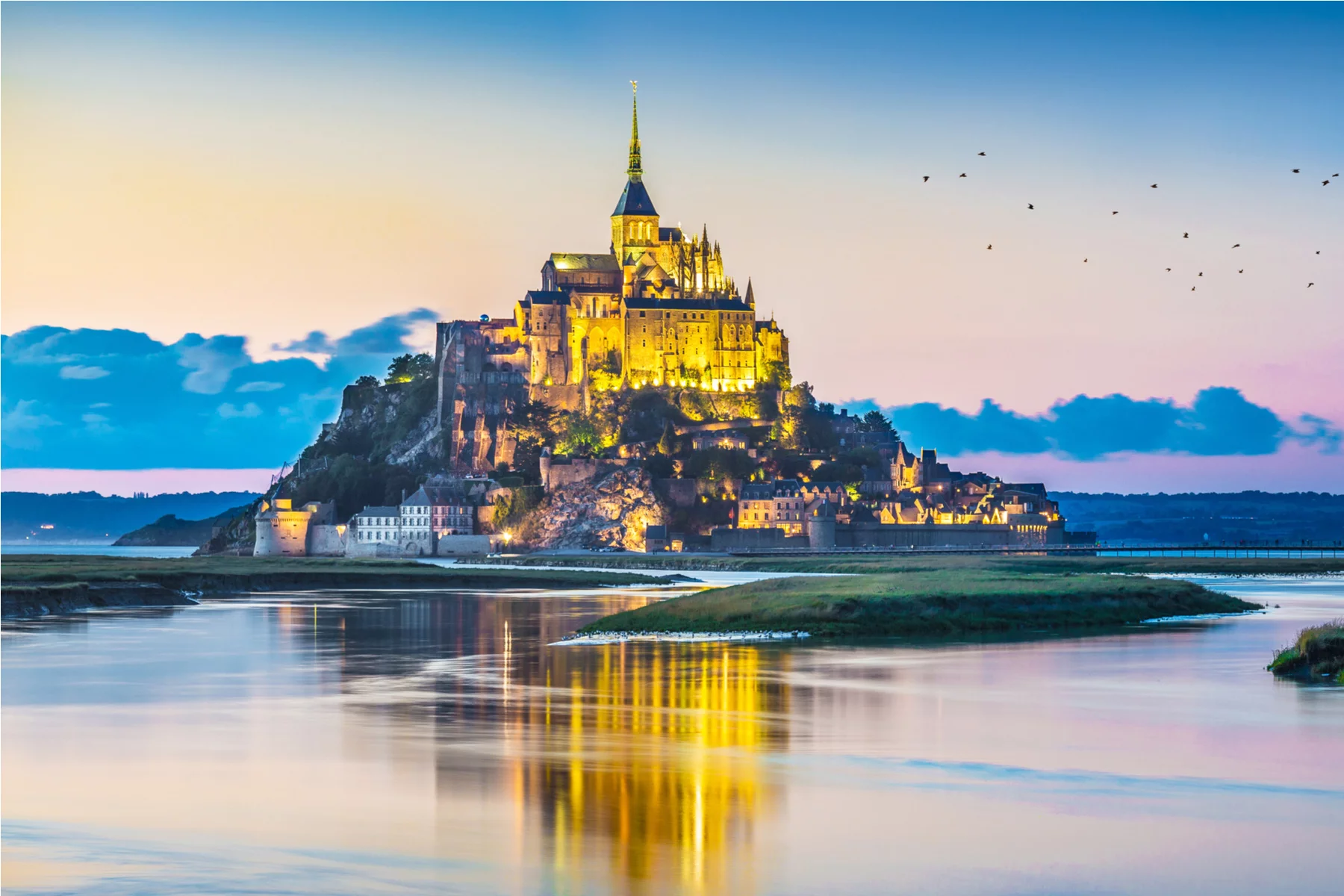
This is made all the more magic by the narrow, winding streets and pretty timbered-framed houses that lead up to it. In fact, the magnificent setting actually inspired Rapunzel’s Tower and the Kingdom of Corona in Disney’s Tangled movie.
The majestic island village once served as a great Christian pilgrim site back in the 8th century. Today, however, it is a UNESCO World Heritage Site that attracts more than three million tourists a year.
Needless to say, it remains one of the most popular places to visit in France, outside of Paris. That said, the vast ocean and sandbank that surround the island certainly make it seem less inviting.
And the fact that it becomes completely secluded when the tides are very high adds even more to its mystery.
Thankfully, though, most travelers today can reach the island by crossing a 2,500-foot-long bridge. If they are feeling adventurous, however, they can traverse the treacherous mudflats when the ocean recedes during low tide.
Dune du Pilat: Europe’s tallest sand dune
Nature lovers will no doubt enjoy lapping up the breathtaking 360-degree views from the top of the Dune du Pilat; the tallest sand dune in Europe.
Located in La Teste-de-Buch in the Arcachon Bay area, the magnificent natural wonder is one of the most iconic places to visit in France.
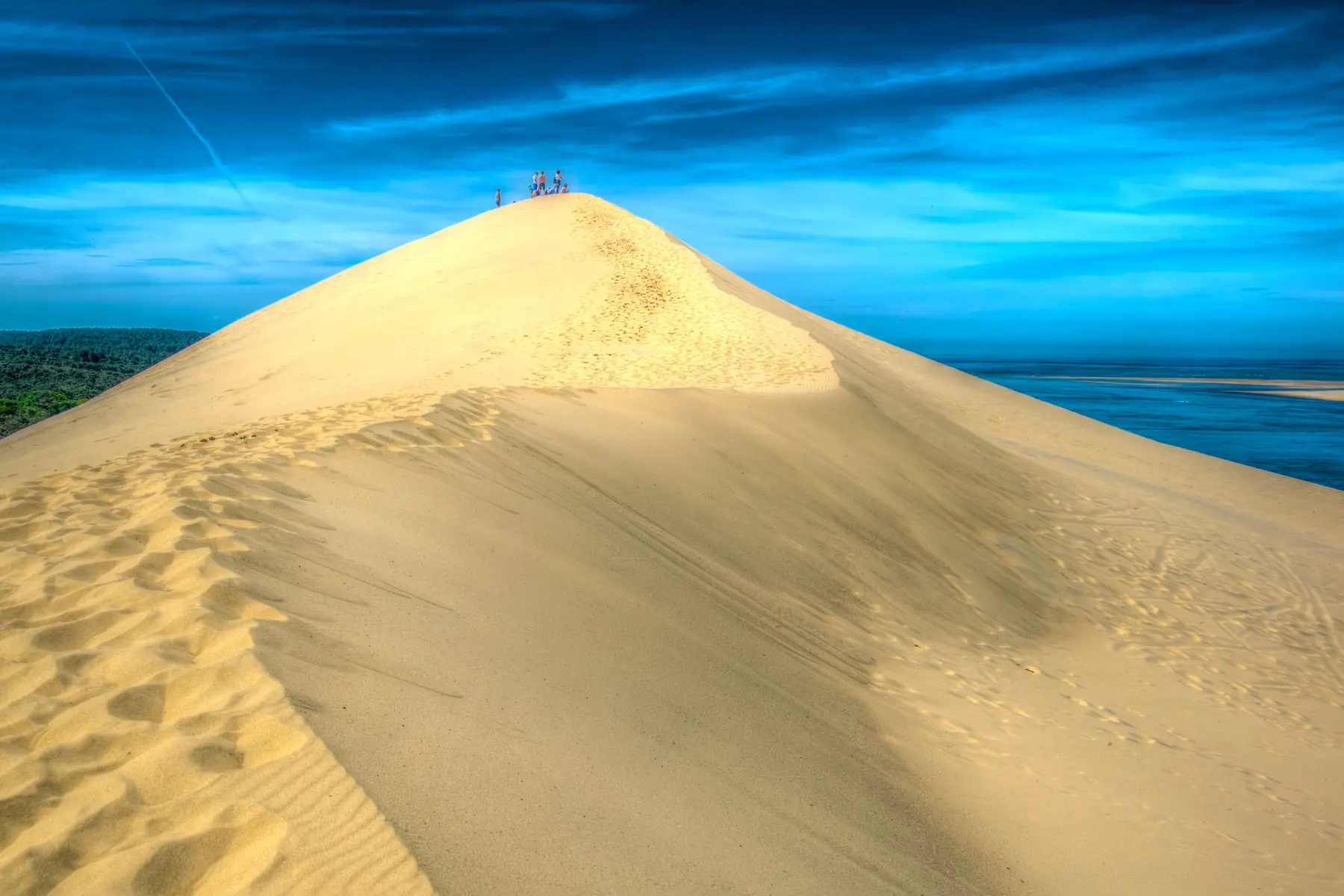
Indeed, every year, more than one million people come to climb the 154 wooden steps to the top and walk along the 2.7-kilometer-long ridge.
And with the sparkling Atlantic Ocean on one side and deep green pine forests on the other, the effort is certainly worth it. Indeed, the towering dune offers some of the most beautiful natural views in Europe.
Dune du Pilat is also a hotspot for paragliders and other outdoor sports enthusiasts. The five nearby campsites, meanwhile, make it popular among campers.
If you fancy cooling down after your victorious ascent, Corniche Beach provides a refreshing spot to enjoy a dip. This lies at the foot of the dune and is easily accessible through the main entrance.
Saint-Tropez: land of luxury
If you’re seeking the decadent life – or at least looking to dabble your toes in it – then a visit to Saint-Tropez is definitely in order.
This beautiful sun-drenched coastal resort on the French Riviera is – after all – renowned for its designer boutiques and immaculate sandy beaches; not to mention yacht-hopping celebrities.
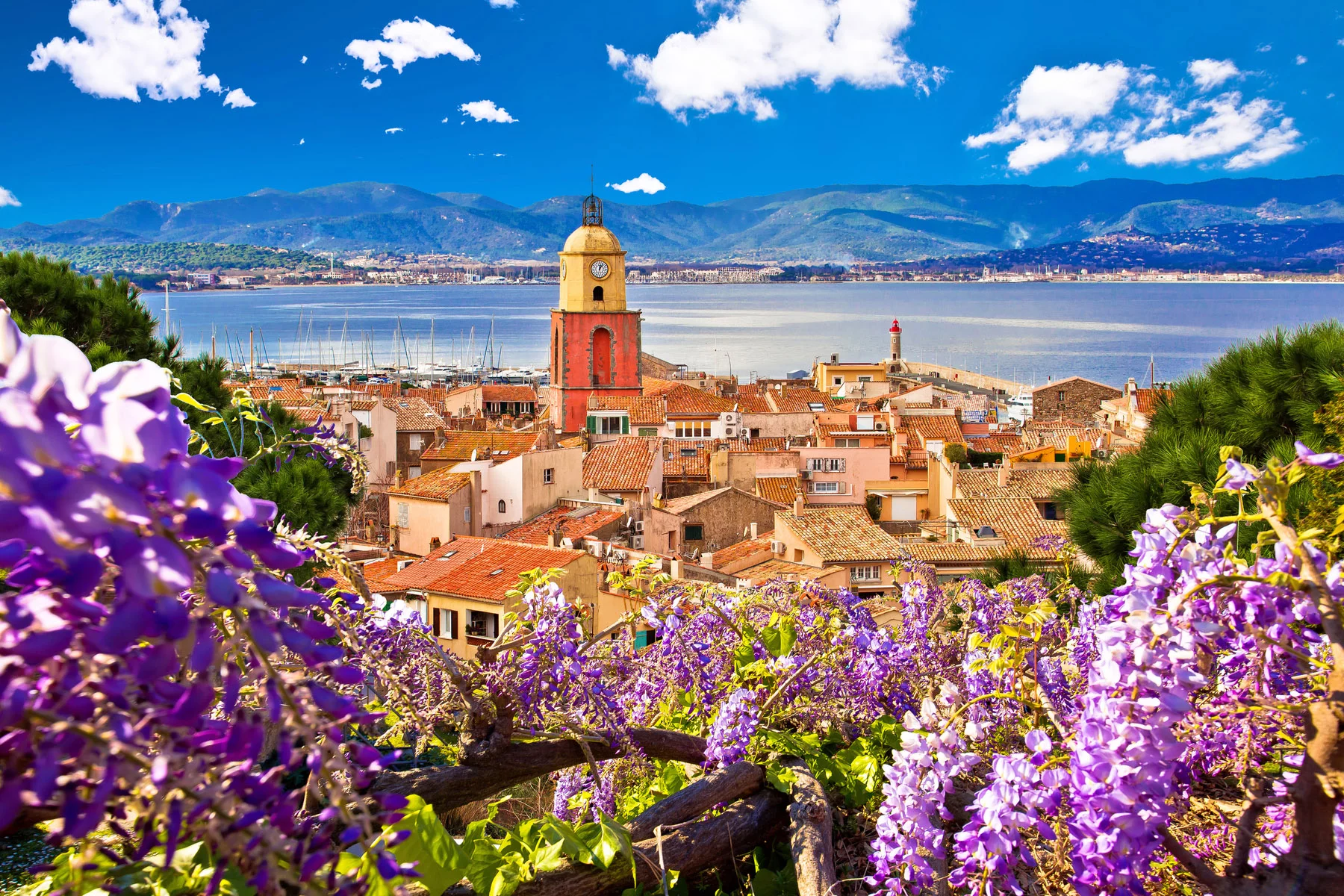
Originally a sleepy fishing village on the Côte d’Azur, the small town became a land of luxury in the late 19th century; thanks to Impressionist painter Paul Signac and other great artists like Henri Matisse and Albert Marquet.
It wasn’t until Hollywood bombshell Brigette Bardot strutted onto the scene in the 1950s, however, that Saint-Tropez gained international fame. The resort was the setting of her film, Et Dieu Créa la Femme (And God Created Woman).
Despite its reputation as being a playground for the wealthy, however, the town still manages to retain its original charm; especially if you visit out of the high season.
Beyond the glitz and the glamour, older locals still play boules in the Place des Lices. Others, meanwhile, sip on café au lait along the picturesque harbor.
And whether you want to sun yourself on the famous Pampelonne Beach, explore the six quaint villages on the rocky Saint-Tropez peninsula, or lap up fantastic views from the hilltop town of Ramatuelle, there is plenty to fill your day.
Rocamadour: the sacred hilltop pilgrimage
There’s a reason why the enchanting hilltop village of Rocamadour is the second most visited attraction in France, after Mont-Saint-Michel.
Perched high on the side of a limestone cliff overlooking the Alzou Canyon in the Dordogne region, the sacred village is nothing less than majestic.
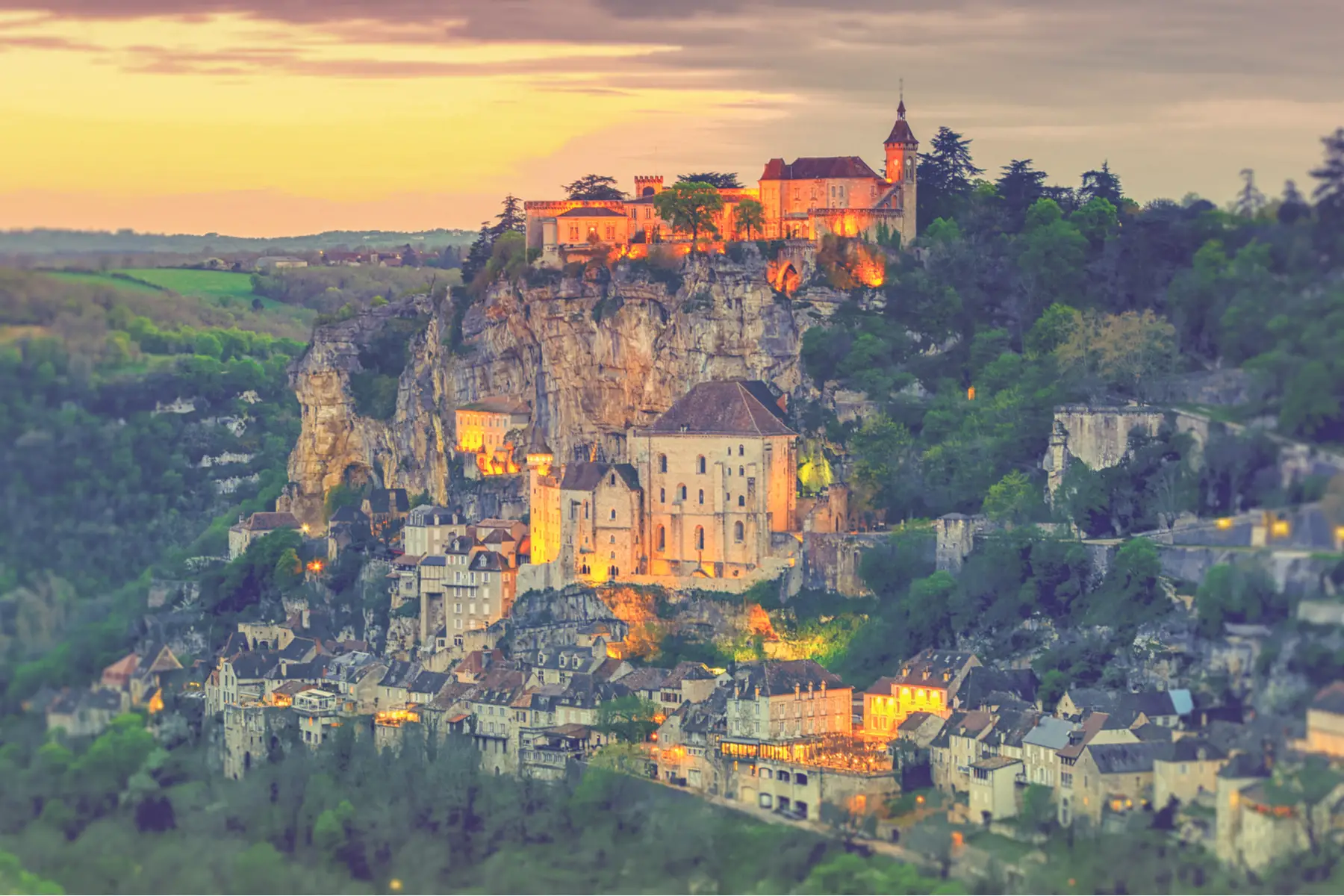
The medieval town was once an important pilgrimage site and famous for its sanctuaries. It is also home to a 15th-century statue of the Black Madonna which stands within the Chapelle Notre-Dame de Rocamadour.
Visitors can explore the chapel, along with seven other religious buildings, after climbing the 216 steps (Le Grand Escalier) to the square at the top. Amazingly, these were once climbed by pilgrims on their knees!
From the top of the village, the views of Rocamadour, the Alzou Canyon, and the wild and unspoiled landscape down below are second to none. Needless to say, they are well worth breaking a sweat for.
If you have time, you can also hop on a boat ride in the nearby Gouffre de Padirac. Gigantic rock formations, underground pools, and huge stalactites and stalagmites bring this extraordinary underground network of caves to life.
The Loire Valley: the Garden of France
Often referred to as the ‘garden of France’, the Loire Valley was once the stomping ground of French royalty and nobility.
Today, however, it is one of the most iconic places to visit in France and open to all. This is owing to its 300 elaborate chateaux, some of which date back as far as the 9th century.
Unsurprisingly, many of these have been listed as UNESCO World Heritage Sites. And while all of them are beautifully maintained and come with their own story, some are more revered than others.
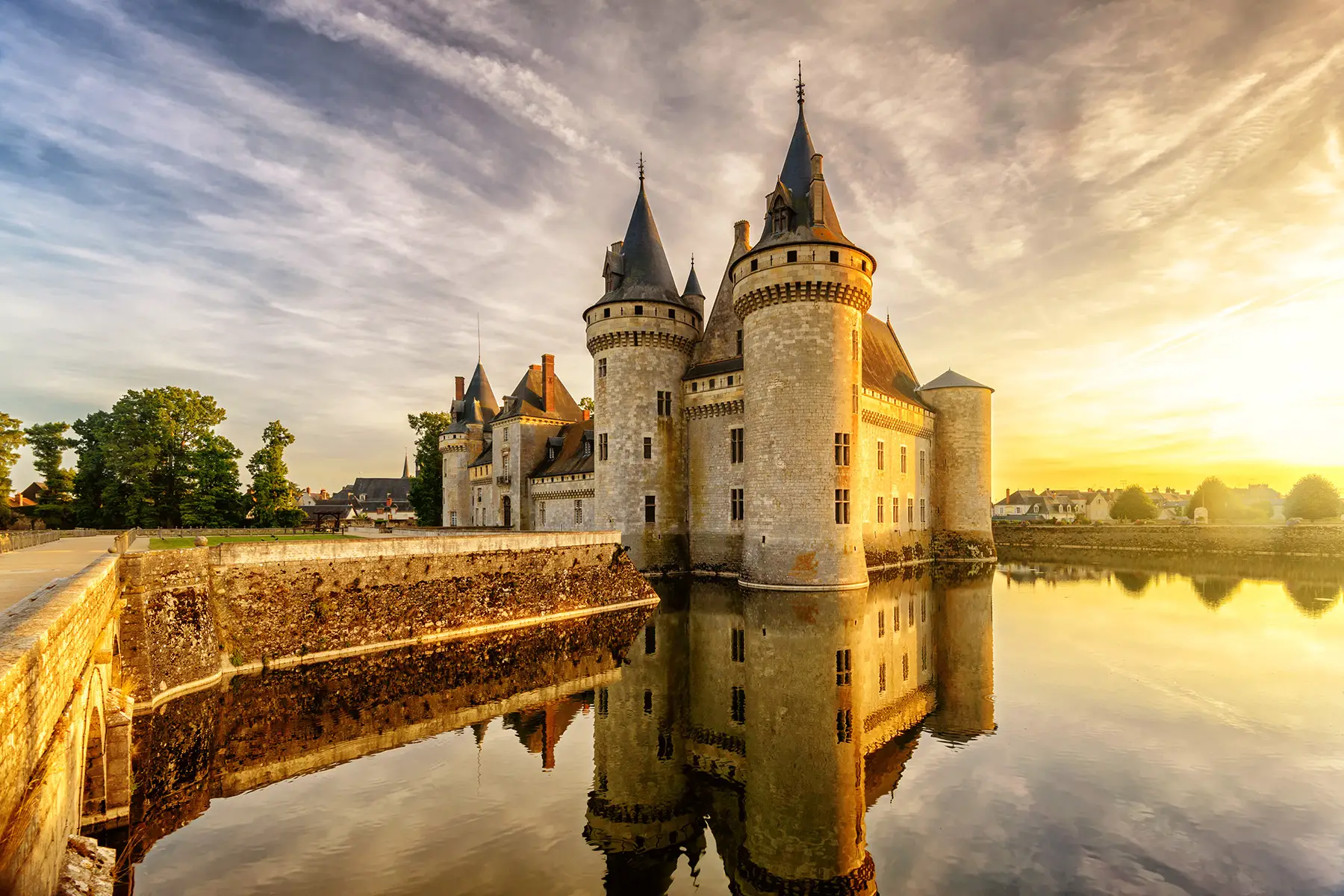
With its stunning French architecture and surrounding deer-filled park, Château of Chambord, for instance, is considered to be one of the most beautiful in the valley.
The Château de Chenonceau, meanwhile, is revered for its unique mix of Gothic and Renaissance architecture which hovers over the Cher River.
And the fairytale-like Château de Sully-sur-Loire, which has played host to several famous historical figures including Joan of Arc and Louis XIV, offers a more medieval beauty.
Of course, with so many beautiful chateaux to explore, you might want to mix things up by visiting one of the numerous vineyards throughout the region.
After all, the valley is famous for its world-class wines; with many local winemakers inviting the public to tour their cellars and sample their creations.
Auvergne: the land that time forgot
Nestled in the heart of central France, the Auvergne Volcanoes Regional Nature Park is the largest volcanic ensemble in Europe and a relic of the prehistoric age.
Covering 395,000 hectares of land, the park is home to four volcanic massifs. Reaching an altitude of 1,465 meters, the Puy de Dôme is the highest volcano in the region.
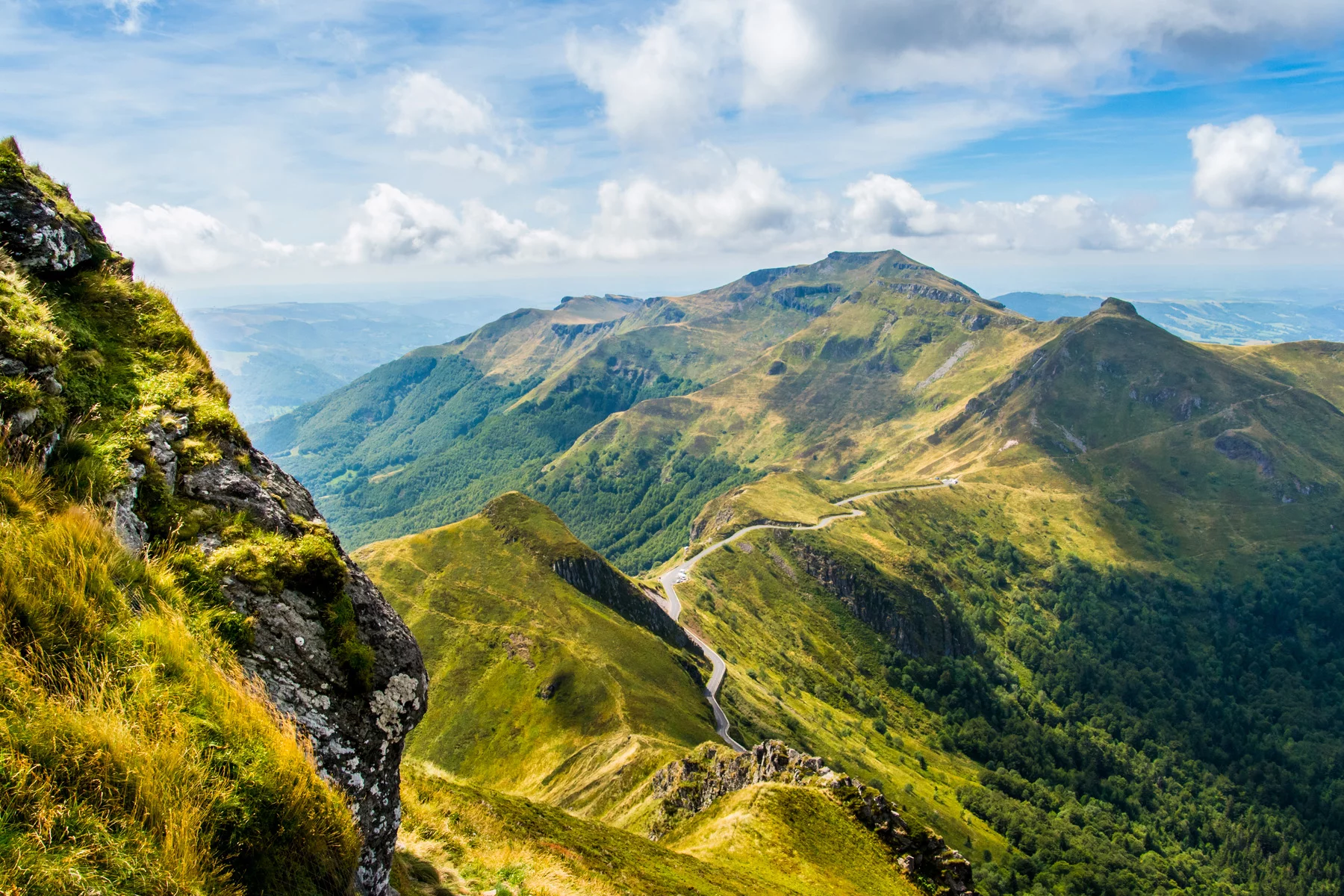
Visitors from all over the world come to admire these sleeping giants which have laid dormant for thousands of years. The peaks are also popular for hiking, cycling, and hot-air ballooning.
The ancient volcanoes are also home to natural hot springs and mineral waters, making them a popular thermal spa destination. In fact, this is where Vichy, Badoit, and Volvic water comes from.
Aside from this, there are many medieval towns, abbeys, and castle ruins to explore in the region; making this a great option for a relaxing getaway in France.
Corsica: the island of beauty
Step onto the beautiful Mediterranean island of Corsica and you might soon forget which country you are in. After all, its unique location between France and Italy means that it embraces the best of both cultures.
The famous birthplace of Napoleon certainly lives up to its nickname – the Island of Beauty – too. Stylish coastal towns, rocky granite peaks, and pristine forests give it a beautiful yet wild appeal.
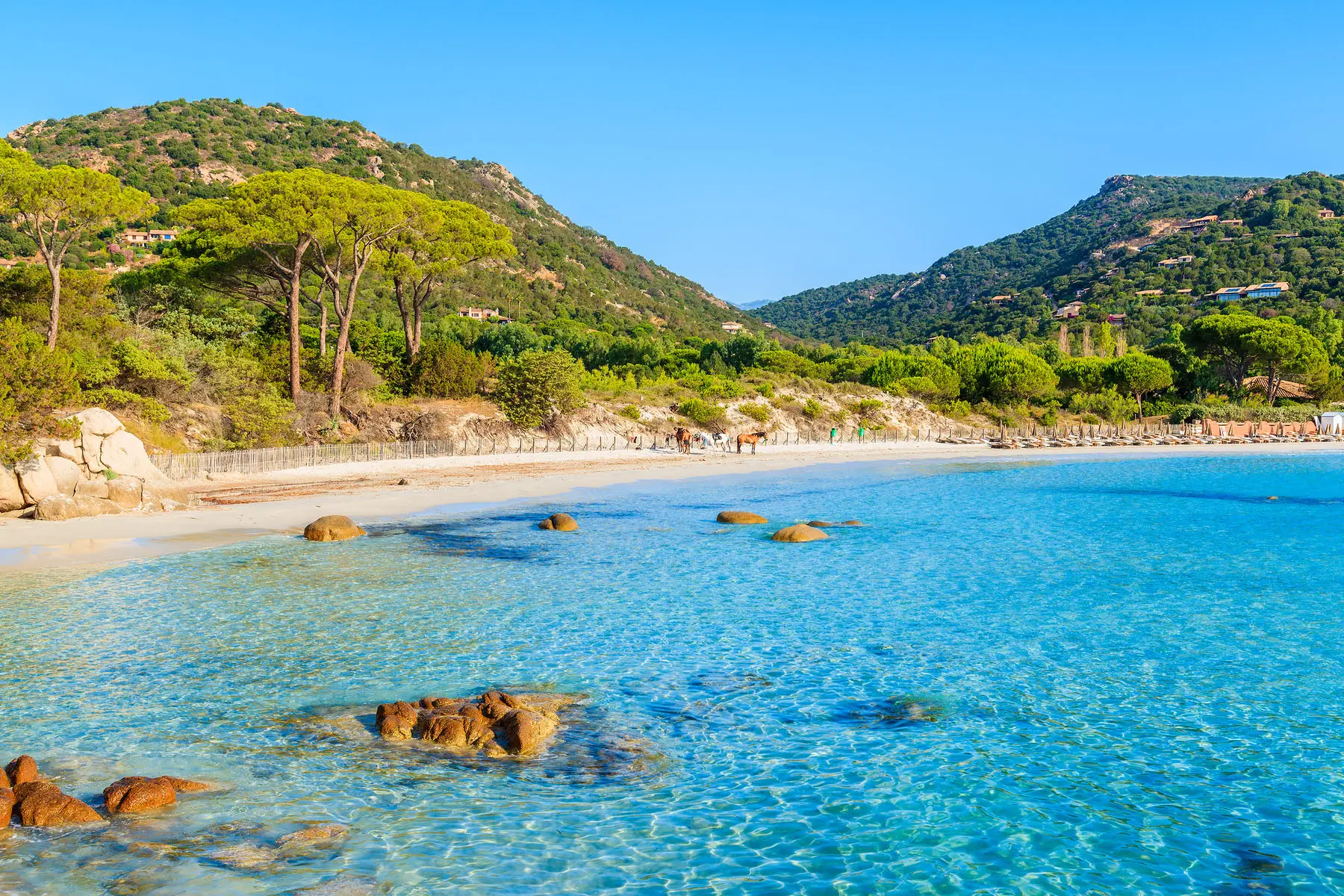
With 1,000 kilometers of heavenly turquoise coastline to explore, it is also a hotspot for snorkeling and scuba diving. Those who prefer to simply sunbathe, however, can do so on one of the island’s many pristine beaches.
Despite its international appeal, the picturesque island of Corsica has managed to retain its own culture and charm. You might be lucky enough to catch some of this while listening to a traditional polyphonic song, for instance, or at a village festival or religious procession.
And don’t be surprised if you stumble upon a donkey or two while hiking in the countryside. The island is home to an abundance of free-roaming wildlife including pigs, cows, goats, and sheep. Thankfully, however, there are no dangerous snakes!
Managing your money in France
Exploring France’s diverse regions requires not just good planning but also smart money management. Banks often charge substantial fees for international transactions, with foreign exchange markups as high as 3-5% above the mid-market exchange rate. These hidden costs can add hundreds to your vacation expenses, especially when visiting multiple regions across France.
Wise offers travelers an alternative that provides access to the mid-market exchange rate. The Wise multi-currency account allows you to hold and exchange euros at the mid-market exchange rate with transparent fees, while the Wise debit card lets you spend directly in euros without foreign transaction fees, as long as you have enough euros in your account.

FAQ – Frequently asked questions
What’s the best way to handle money when traveling through different regions in France?
The most efficient approach is to use a combination of payment methods. Having a multi-currency account like Wise gives you the flexibility to hold and exchange euros at the mid-market exchange rate, avoiding the typical markups that banks charge tourists. Carry a small amount of cash for small vendors in rural areas.
Should I exchange currency before visiting popular French destinations?
While having some euro cash on hand is convenient, exchanging large amounts before your trip often means getting poor exchange rates. Instead, consider using Wise to convert your currency at the mid-market exchange rate and withdraw euros from ATMs as needed once you arrive. This approach typically offers better value than airport currency exchanges or tourist-area conversion services, especially in high-end destinations.



